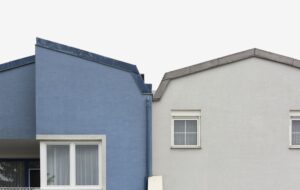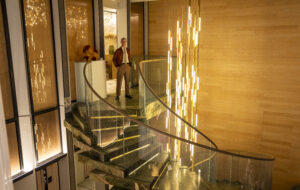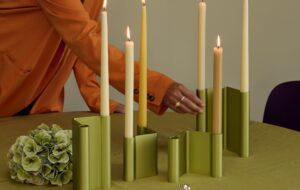

words Justin McGuirk
The young architect gets a retrospective of sorts, but are we supposed to admire his buildings or just his success?
Being invited to follow Wren, Hawksmoor and Mies as the next architect to have a show at the Whitechapel could be, depending on how you look at it, either deeply flattering or eye-wateringly embarrassing. But then David Adjaye has had one of those careers. Based on the ten public commissions on display in David Adjaye: Making Public Buildings, the 39-year-old must be the most commercially successful British architect of his generation. Looking at these buildings, it is probably also a safe assumption that he is the most over-hyped.
Adjaye wrote himself into the success story that was London in the late Nineties by building houses for successful artists and media personalities. He was young, black and charming – three qualities that distinguished him from the generic image of the architect – and the media soaked him up. Consequently there was some reluctance among his peers to take him seriously. His habit of painting things matt black was seen by the cynical as at best a fixation with surface and at worst a form of personal mythmaking. But the houses demonstrated that Adjaye could make statements with modest buildings. They showed that he had an artist’s eye for materials and that he could challenge the spatial configurations of the terraced house or warehouse. They also showed that he could hold a meaningful dialogue with specific contexts. A building like the Dirty House evinced an unusual ability to exist somewhere between glamour and grime, and in that sense summed up the Hoxton of the YBAs.
So now that Adjaye has all but left behind that modesty of scale for the rigours of public building and the glories of international architecture, now that he is producing the multi-million-pound buildings of “substance” that earn an architect an exhibition, what do we make of it?
The first thought is that his public buildings are less challenging than his houses.
In a way this is a rather awkward point in Adjaye’s career to have this show, for two reasons. The first is that most of his public buildings haven’t been built yet. The second is that moving from houses to large public buildings with a community role expected of them is not easy. And so what we have here is Adjaye learning in public, groping for a language that can accommodate this shift in scale and content.
If there is a reason for having this show now, it is that Adjaye’s Idea Store recently opened on Whitechapel Road, a five-minute walk from the gallery. This public library follows another by the same name completed in 2004, in nearby Poplar. Its facade has the same stripes of green glass as the first, with their reference to the covers on the market stalls outside, and it makes the rather nice gesture of putting an escalator right onto the street to entice people in. But essentially it is a modernist box with some bookshelves in it. I fail to see how it redefines public space as a “third space”, as two of the essayists argue in the catalogue, subtitled Specificity Customization Imbrication (no, I don’t know what it means either). It does not – despite the Blairite rebranding of “Idea Store”, with its implication that learning has been subsumed under commerce – re-imagine what a library is, as Koolhaas did in Seattle.
It is an interesting quality of this building, and perhaps Adjaye’s public work in general, that it is so conveniently seized upon as a pincushion by intellectuals trying to load it with everything they want public space to mean in multicultural Britain. Is it the antidote to “Lord Tebbitt’s politics of antagonism”; do its various materials “embed” diversity in the building? Or does it just happen to be on one of the most ethnically rich streets in London?
Adjaye is not averse to a bit of this post-rationalising himself. Each of the exhibition labels links a piece of African handicraft to the model behind it. It feels spurious to suggest that the facade of the lovely pavilion Adjaye designed for last year’s Venice Biennale was inspired by a comb from Ghana, or that the Bernie Grant Arts Centre in Tottenham was influenced by a straw mat from Rwanda. These buildings speak for themselves. As does the Stephen Lawrence Centre in Deptford, which looks like a piece of municipal modernism with a facade by Herzog & de Meuron.
But then, these perfect models with their neat material samples demonstrate none of the investigation, the sheer rough-edged, unembarrassed curiosity of the Herzog & de Meuron show at Tate Modern last year. Apart from the walls having been painted black, this is a very conventional architecture show, and I’m not convinced that visitors will take much away from it. Based on the works displayed here, Adjaye is relying on an opportunist’s, one might say a charmer’s, skills for finding narratives in surface qualities. The real thing that we are being asked to admire here – and it is no small thing – is the fact that such a young architect is doing these buildings at all. Because, so far, it seems that Adjaye’s greatest success is his success.
David Adjaye: Making Public Buildings was at the Whitechapel until 26 March 2006
www.whitechapel.org
















